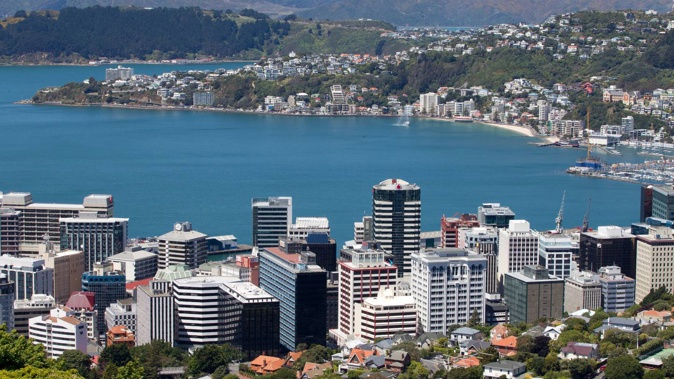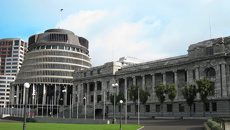
Wellington needs its own Wayne Brown – a gutsy, business-focused mayor who can rock up to the Government and say, “You have a responsibility to help fund the cost of restoring services impacted by the 7.8 Kaikōura earthquake in 2016.”
And more importantly, publicly bang the table and get action.
It has been extraordinary to observe the pantomime being acted out between Local Government Minister Simeon Brown in the Beehive and Wellington Mayor Tory Whanau, whose staff are currently hanging out in offices on The Terrace because their building is munted.
Simeon Brown has a point.
I found it deeply embarrassing in January to watch Sky News’ Australian presenters scoff at the ridiculous sight of water spouting into the sky as a water main burst in “New Zealand’s capital city”.
On their early morning show, they questioned why so much water was being wasted. The takeout was that this was not the first world – just another example of New Zealand being a relative basket case. Ouch.
But it strains credulity that the public blame for Wellington’s leaky water infrastructure is predominantly being shafted onto Whanau and the current council. She is obviously out of her depth.
She was hopelessly late to the party when summoned by Brown to report on the actions her council planned to help fund measures to renew failed pipes which have resulted in more than 40 per cent of the city’s drinking water being lost through leaks.
It’s not her fault that previous councils embarked on cycleway programmes and the like (although she is a fellow traveller) and effectively ignored the need to make the city’s “horizontal” infrastructure, such as water and sewage pipes, fit for the future.
But as a newbie mayor, she also made questionable calls such as pressing ahead with a proposal that would see the council invest $32 million to buy land under the quake-damaged Reading Courtney Place cinema building – a plan that may yet be derailed by councillors now intent on finally doing their stuff.
The council is refocusing its budget so it can increase its financial contribution to fixing the leaky pipes problem.
The preferred option of council staff is to spend $1.1 billion on water infrastructure over the next 10 years – a 65 per cent increase on the amount allocated for pipes in the last Long-Term Plan from 2021. The upshot is ratepayers are facing a 15.4 per cent rates increase.
Whanau’s hand is weak when it comes to protecting Wellington’s interests. She has been polishing her brand through skilful PR – such as high-profile television items and interviews promoting her enrolling at the gym and doing workouts – after some unfortunate earlier personal publicity.
But it would be remiss of me not to state that her mayoral predecessors, who include Andy Foster – now chair of Parliament’s infrastructure and transport committee – and Justin Lester failed to get central government to pony up financial and infrastructure assistance to help restore the considerable post-earthquake damage which Wellington suffered in 2016.
Approximately 80 buildings within Wellington’s CBD were damaged by the Kaikōura earthquake, including the port area, which suffered considerable liquefaction. The overall cost of repairs, including insured losses to the city’s buildings, infrastructure and economy, was early on put at $2-3b, according to Simon Fleisher, who was previously in charge of Wellington City Council’s civil defence and emergency management response.
That cost has since snowballed through the impact of a much stronger building code that has caused some owners to question the financial viability of fixing their properties. On top of that, there are the usual supply chain and inflation cost pressures.
Within the Wellington business community, questions are being asked as to why a national state of emergency was not declared in the capital after the 2016 quake.
There have been only three national states of emergency declared in New Zealand. These have typically been when local responses are under extreme pressure and there is a threat to lives.
The first was the February 2011 Christchurch earthquake, then the Covid response and Cyclone Gabrielle.
Not all went to plan in Christchurch.
But what did happen – and this is of note when thinking of solving Wellington’s current problems – is that an alliance was set up between national and local government funders, infrastructure owners and five civil contractors to fix the city’s horizontal infrastructure.
That may be an unpopular view among the raft of Cabinet ministers intent on getting central government finances under control. Particularly, Finance Minister Nicola Willis.
But it just does not make sense to wait for a cash-strapped council to take 10 years to fix this problem when a co-funded project could deal with it quicker and stymie the likely potential for those leaks to cause more problems with soil substructures and more ground slips.
The Government, in my view, needs to recognise Wellington is our capital and get down to the business of making sure it is a city we can be proud of.
Failing that, where is Wayne Brown?
Take your Radio, Podcasts and Music with you









